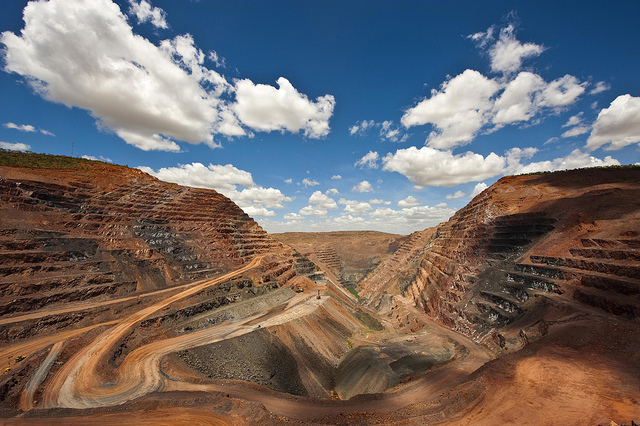The closure of the world’s biggest diamond mine Argyle, in the Kimberly region of northern Australia – has drawn the attention of the international business press. In July, Bloomberg‘s diamond specialist Thomas Biesheuvel and his colleague David Stringer wrote an extensive piece about it.
Argyle, “famed more for the fistful of coveted pink and red gems it yields each year than being a major producer of lower-quality stones » is being shuttered by Rio Tinto Group after almost four decades. Rivals from Russia to Canada hope that can help turn around the beleaguered industry.”
Production at Argyle, about 2,600 km (1,600 miles) northeast of the state capital Perth, is scheduled to end before the end of next year after finally exhausting its supply of economically viable stones, Arnaud Soirat, Rio’s head of copper and diamonds, told the Bloomberg reporters.
 “There is going to be a fair bit of supply which is going to come out of the market,” Soirat said. “In late 2020 we’ll be stopping operations and will start the rehabilitation of the site.”
“There is going to be a fair bit of supply which is going to come out of the market,” Soirat said. “In late 2020 we’ll be stopping operations and will start the rehabilitation of the site.”
Two questions are asked in the diamond industry at large:
What will Argyle’s closure mean for the prices of melees and small rough diamonds? And: is there an alternative source for the very small annual production of top-quality pink diamonds produced by Argyle?
The short answer to the latter question is: No, there is not. Leibish Polnauer, the affable founder and owner of the eponymous Israel-based company, says there is no alternative to the “reddish, Roseberry color of Argyle pinks that is so different from any other sources.” “Of course,” he added, “as you can see in the trade and business media, other producers are going out of their way to showcase any pink diamonds they mine, but none of these stones, no matter their weights, size up against those magnificent colors that those rare Argyle pinks supply us with.”

